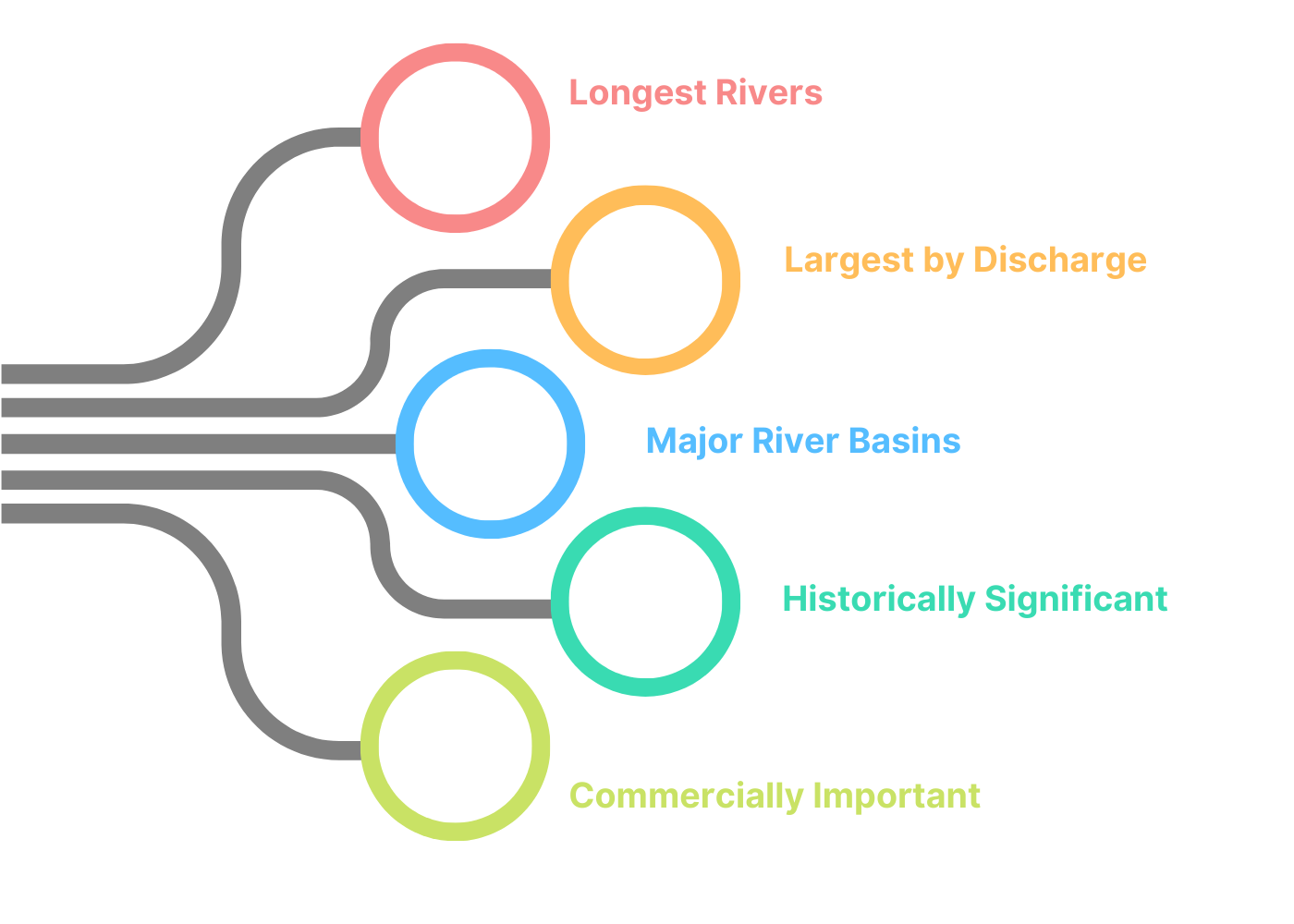Gist
Geographical Significance of Rivers
• Shaping landscapes: Rivers erode, transport, and deposit
sediments, carving valleys, creating floodplains, and forming
deltas where they meet the sea.
• Providing natural boundaries: Rivers have historically
served as natural borders between countries, states, or
regions.
• Facilitating transportation: Throughout history, rivers
have been vital for transportation, allowing the movement of
people and goods.
Ecological Significance of Rivers
• Supporting freshwater ecosystems: Rivers provide
freshwater habitats for a diverse range of plants and animals,
from fish and amphibians to aquatic insects and plants.
• Nutrient transport: Rivers carry essential nutrients
downstream, enriching ecosystems like wetlands and estuaries.
• Supporting terrestrial ecosystems: Riparian zones, the
land bordering rivers, are crucial for terrestrial plants and
animals, providing food, water, and shelter.
• Migration corridors: Rivers act as migration corridors
for fish, birds, and other animals.
Examples of Important Rivers
• The Nile River: The longest river in the world, the Nile
has played a central role in the development of human civilization
in Africa for thousands of years.
• The Amazon River: The Amazon River basin is home to the
most biodiverse rainforest on Earth, and the river itself is
crucial for the survival of countless species.
• The Mississippi-Missouri-Red-Arkansas River System: This
massive river system drains a large portion of North America and
is vital for agriculture, transportation, and ecosystems in the
region.
• The Yangtze River: The longest river in Asia, the Yangtze
plays a crucial role in the economy and ecology of China.
• The Danube River: The Danube River flows through ten
European countries and is a vital waterway for transportation and
commerce.
Threats to Rivers
• Pollution: Industrial waste, agricultural runoff, and
sewage can all pollute rivers, harming aquatic life and degrading
water quality.
• Dams: While dams can provide benefits like hydropower and
irrigation, they can also disrupt natural river flows and harm
ecosystems.
• Overuse of water: Excessive water withdrawal for
agriculture, industry, and domestic use can reduce river flows and
harm ecological health.
Conservation Efforts
• Water pollution control measures: Implementing
regulations and treatment systems to reduce pollution entering
rivers.
• Sustainable water management practices: Promoting water
conservation and efficient water use in agriculture and other
sectors.
• River restoration projects: Efforts to restore damaged
river ecosystems and improve water quality.
• Understanding and appreciating the importance of rivers is
crucial for protecting these vital ecosystems and ensuring their
sustainability for future generations.
